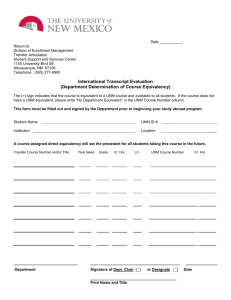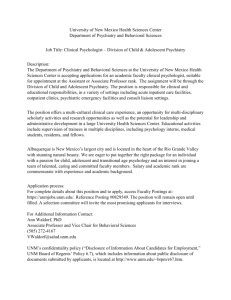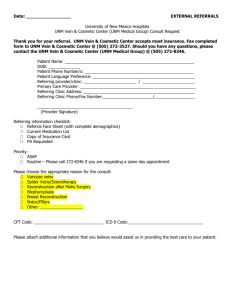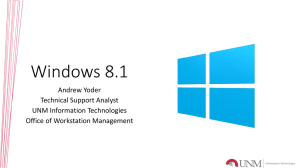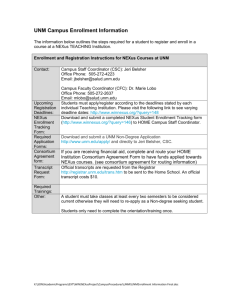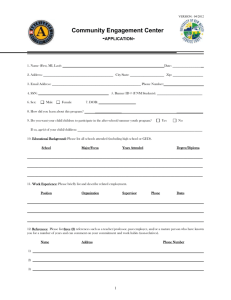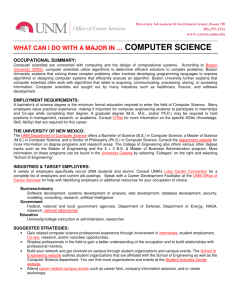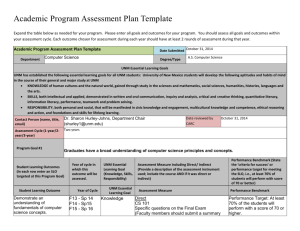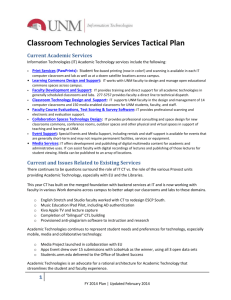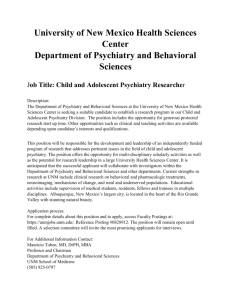College of Arts and Sciences
advertisement
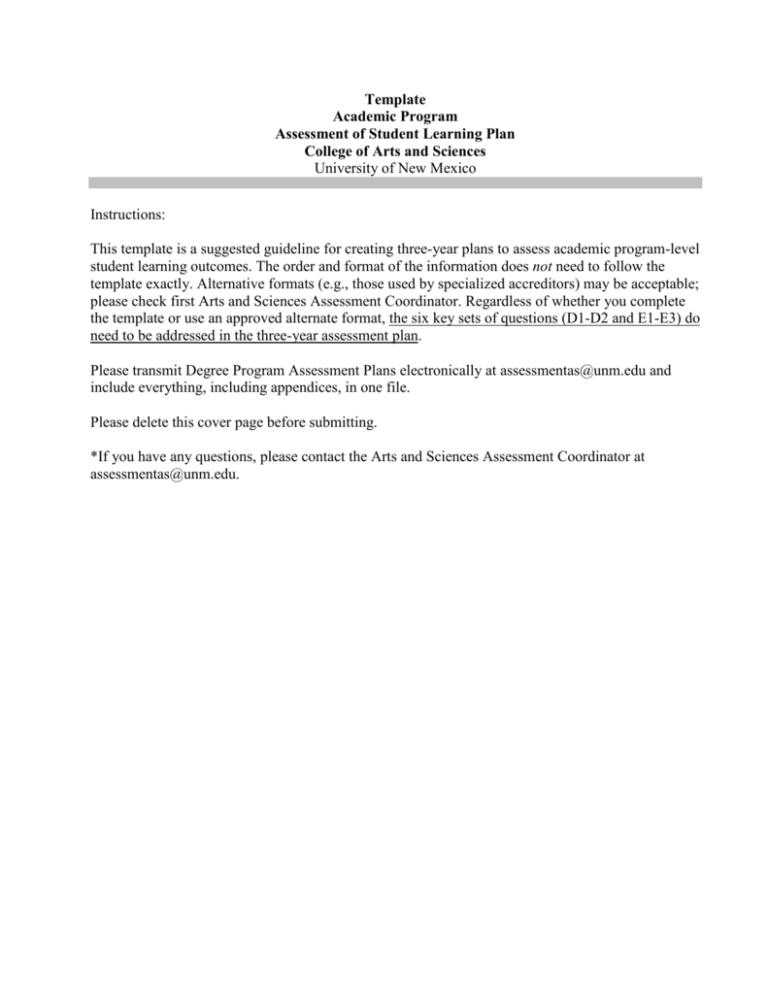
Template Academic Program Assessment of Student Learning Plan College of Arts and Sciences University of New Mexico Instructions: This template is a suggested guideline for creating three-year plans to assess academic program-level student learning outcomes. The order and format of the information does not need to follow the template exactly. Alternative formats (e.g., those used by specialized accreditors) may be acceptable; please check first Arts and Sciences Assessment Coordinator. Regardless of whether you complete the template or use an approved alternate format, the six key sets of questions (D1-D2 and E1-E3) do need to be addressed in the three-year assessment plan. Please transmit Degree Program Assessment Plans electronically at assessmentas@unm.edu and include everything, including appendices, in one file. Please delete this cover page before submitting. *If you have any questions, please contact the Arts and Sciences Assessment Coordinator at assessmentas@unm.edu. Academic Program Plan for Assessment of Student Learning Outcomes College of Arts and Sciences The University of New Mexico A. College, Department and Date 1. College: 2. Department: 3. Date: [Insert College/School/Branch Campus Name] [Insert Department Name] [Insert current date] B. Academic Program of Study* [Insert Degree or Certificate level, and name of program. Example: B.S. Anthropology] C. Contact Person(s) for the Assessment Plan [Insert each person’s name, title, e-mail address] D. Broad Program Goals & Measurable Student Learning Outcomes [Attach Cover Sheet for Student Learning Outcomes and associated materials.] OR [List below:] 1. Broad Program Learning Goals for this Degree/Certificate Program A. B. C. etc. 2. List of Student Learning Outcomes (SLOs) for this Degree/Certificate Program [Your program should have at least 3 and these should be aligned with the program Goals (as indicated by A, B, C, etc.) and UNM’s broad learning goals] A.1. UNM Goals ( ___ Knowledge ___ Skills ___ Responsibility) UNM Goals ( ___ Knowledge ___ Skills ___ Responsibility) A.2 * Academic Program of Study is defined as an approved course of study leading to a certificate or degree reflected on a UNM transcript. A graduate-level program of study typically includes a capstone experience (e.g. thesis, dissertation, professional paper or project, comprehensive exam, etc.). B.1. UNM Goals ( ___ Knowledge ___ Skills ___ Responsibility) B.2 UNM Goals ( ___ Knowledge ___ Skills ___ Responsibility) E. Assessment of Student Learning Three-Year Plan All programs are expected to measure some outcomes and report annually and to measure all program outcomes at least once over a three-year review cycle. 1. Timeline for Assessment In the table below, briefly describe the timeframe over which your unit will conduct the assessment of learning outcomes selected for the three-year plan. List when outcomes will be assessed and which semester/year the results will be discussed and used to improve student learning (e.g., discussed with program faculty, interdepartmental faculty, advisory boards, students, etc.) Year/Semester Year 1, Fall Year 1, Spring Year 2, Fall Year 2, Spring Year 3, Fall Year 3, Spring Assessment Activities 2. How will learning outcomes be assessed? A. What: i. For each SLO, briefly describe the means of assessment, i.e., what samples of evidence of learning will be gathered or measures used to assess students’ accomplishment of the learning outcomes in the three- year plan? ii. Indicate whether each measure is direct or indirect. If you are unsure, contact assessmentas@unm.edu for clarification. You should have both direct and indirect measures and at least half of the assessment methods/measures program wide will be direct measures of student learning. iii. Briefly describe the criteria for success related to each direct or indirect measures of assessment. What is the program’s performance target (e.g., is an “acceptable or better” performance by 60% of students on a given measure acceptable to the program faculty)? If scoring rubrics are used to define qualitative criteria and measure performance, include them as appendices. B. Who: State explicitly whether the program’s assessment will include evidence from all students in the program or a sample. Address the validity of any proposed sample of students. Please note that you are recommended to sample all students in your program; however, sampling approx. 20% of the student population is acceptable if the course’s total student population (or student enrollment) exceeds 99 in an academic year. A valid explanation should be provided for samples that are less than 20% of the total student population. 3. What is the unit’s process to analyze/interpret assessment data and use results to improve student learning? Briefly describe: 1. who will participate in the assessment process (the gathering of evidence, the analysis/interpretation, recommendations). 2. the process for consideration of the implications of assessment for change: a. to assessment mechanisms themselves, b. to curriculum design, c. to pedagogy …in the interest of improving student learning. 3. How, when, and to whom will recommendations be communicated?
